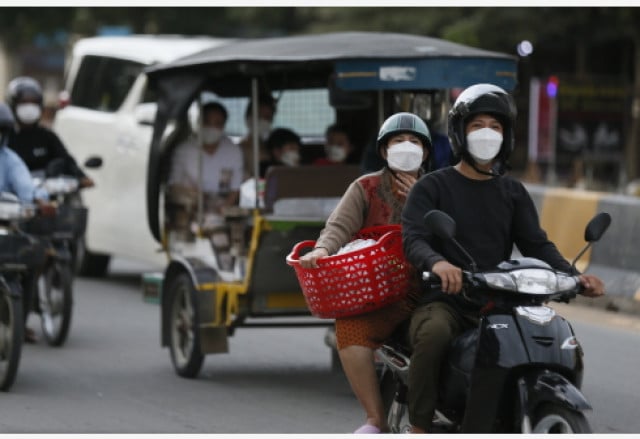A Snapshot of Life as a Wildlife Photographer

- By Meng Seavmey
- January 13, 2024 7:10 PM
PHNOM PENH – Suong Mardy is one of the country’s few wildlife photographers. For eight years he has devoted his time and money to taking pictures to help preserve species and stop poaching.
Turning a hobby into a skill, Mardy founded the Cambodia Biodiversity Photography group in 2022. Its volunteers spend their time and money on capturing pictures and videos of wildlife that is rarely seen or deep in protected areas.
Members work full-time in sectors ranging from public institutions to private companies and non-governmental organizations.
They are united in their passion for wildlife photography. Mardy’s interest is in promoting biodiversity and conserving wildlife. He makes his contribution through photography.
“There are not many wildlife photographers in Cambodia, and the Cambodian people are not so much aware about the natural resources within these forest covers either,” he said.
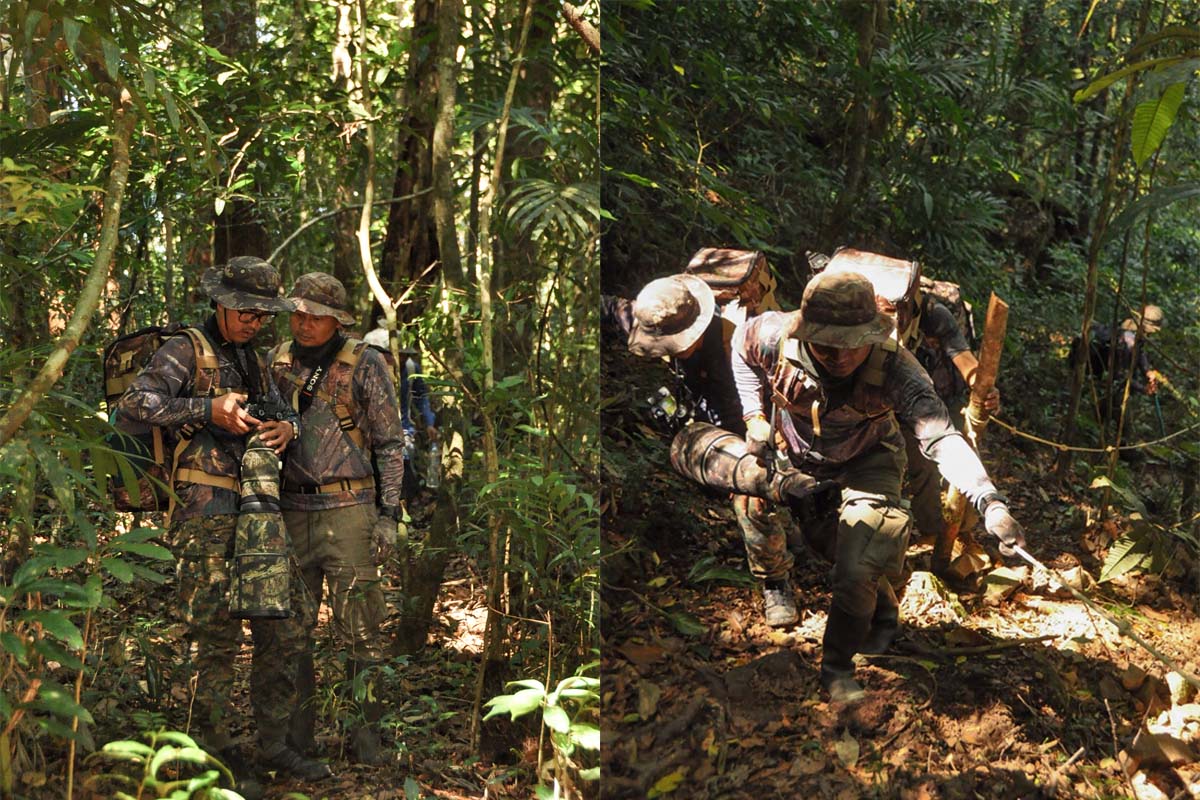 Suong Mardy and the Cambodia Biodiversity Photography members on Phnom Preah Mountain. Photo provided by Suong Mardy
Suong Mardy and the Cambodia Biodiversity Photography members on Phnom Preah Mountain. Photo provided by Suong Mardy
He intends to raise awareness of the importance of wildlife, including among people living around protected areas, and most importantly, to stop wildlife hunting.
He also believes the photographic features of beautiful and rare wildlife will help local tourism. Photos of these species will also help wildlife researchers.
A journey surrounded by greenery
Park rangers of environment departments and local communities are always ready to lead the way to arrive at locations. The group has only used help from the communities that are recognized by the Environment Ministry.
“They know the paths and the locations we need to go to. Plus, they can also receive some income from their service,” Mardy said.
“By using their services, we can change their minds from being hunters to being protectors of wildlife. Besides, it’s a good tourism service to have them leading us around the community.”
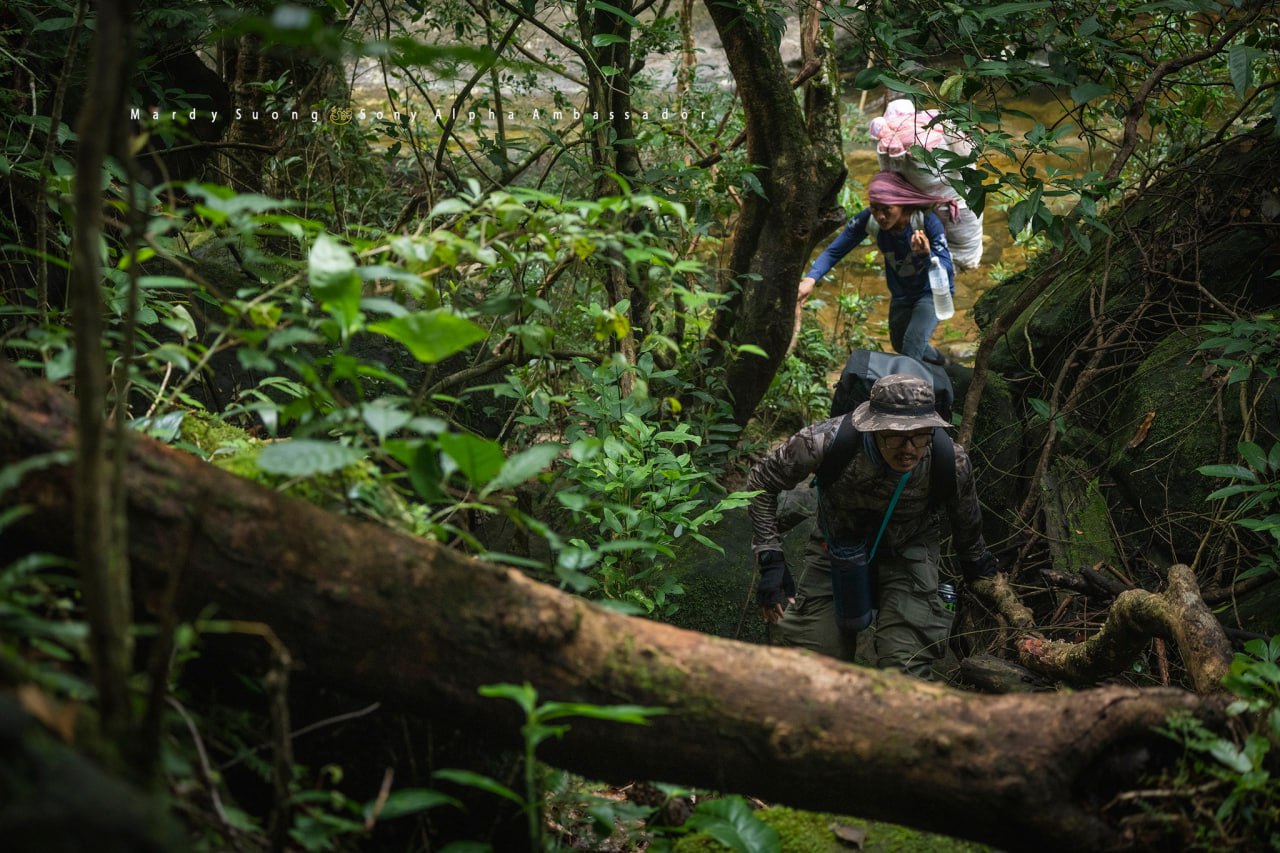 A Cambodia Biodiversity Photography member and a local citizen on Phnom Preah Mountain. Photo: Suong Mardy
A Cambodia Biodiversity Photography member and a local citizen on Phnom Preah Mountain. Photo: Suong Mardy
Mardy usually chooses to photograph within protected areas due to features of wildlife there, but it also depends on the species.
Some animals are easy to capture because they are used to human presence, while some are hard to predict their movements and are rarely seen, according to the photographer.
“For example, different types of birds live in different places,” he said.
“It’s easy to find those living around cities or rural areas but the group may need help from authorities when going to the wetland areas.
“As for forests, the group always contacts park rangers or the recognized communities because they are geographically knowledgeable.”
Based on their experience, the members sometimes had to sleep in the forests to wait for the target subjects. They would carry tents and food, getting help from the local people.
“This, too, is another benefit for the local community because we also pay them for carrying our stuff,” Mardy said, adding that the group might go to the same place about five times, spending a few days each time to get to the subjects.
When night falls, Mardy said they can spot other rare species randomly and they took the chances to snap those animals.
“Photographing wildlife requires patience, determination, and luck despite the good equipment and geographical knowledge,” he said.
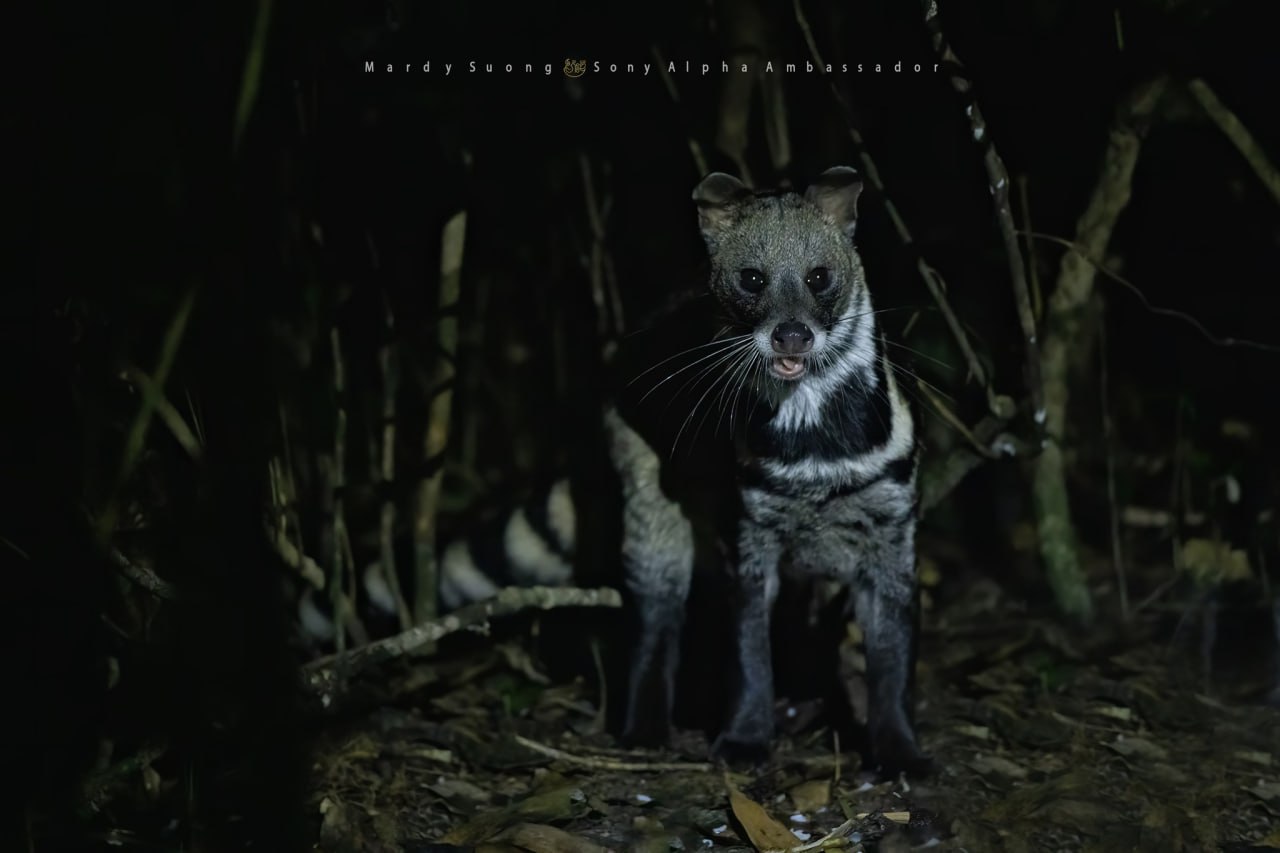 A Large-spotted civet was spotted at night on the Phnom Preah Mountain. Photo: Suong Mardy
A Large-spotted civet was spotted at night on the Phnom Preah Mountain. Photo: Suong Mardy
A small step to start with
Starting in 2009, his photography journey took off in the general categories, including landscape and street photography. After six years, he made a big decision to focus on wildlife.
He became an ambassador for Cambodia Sony Alpha in 2015 and was exploring the field with different groups of photographers, particularly shooting landscape views and wildlife in the forests alongside local communities.
Later, with equipment more suited to shooting fast-moving subjects such as birds, he accepted the challenge to rise to another level, rare wildlife photography.
He has captured many rare species, especially birds, and produced images in natural settings deep in forests where not just anyone can go into.
Mardy has contributed his work, along with that of others, to the Ministry of Tourism’s biodiversity book “Cambodia My Homeland” which consists of photographs of wildlife in protected areas across the country.
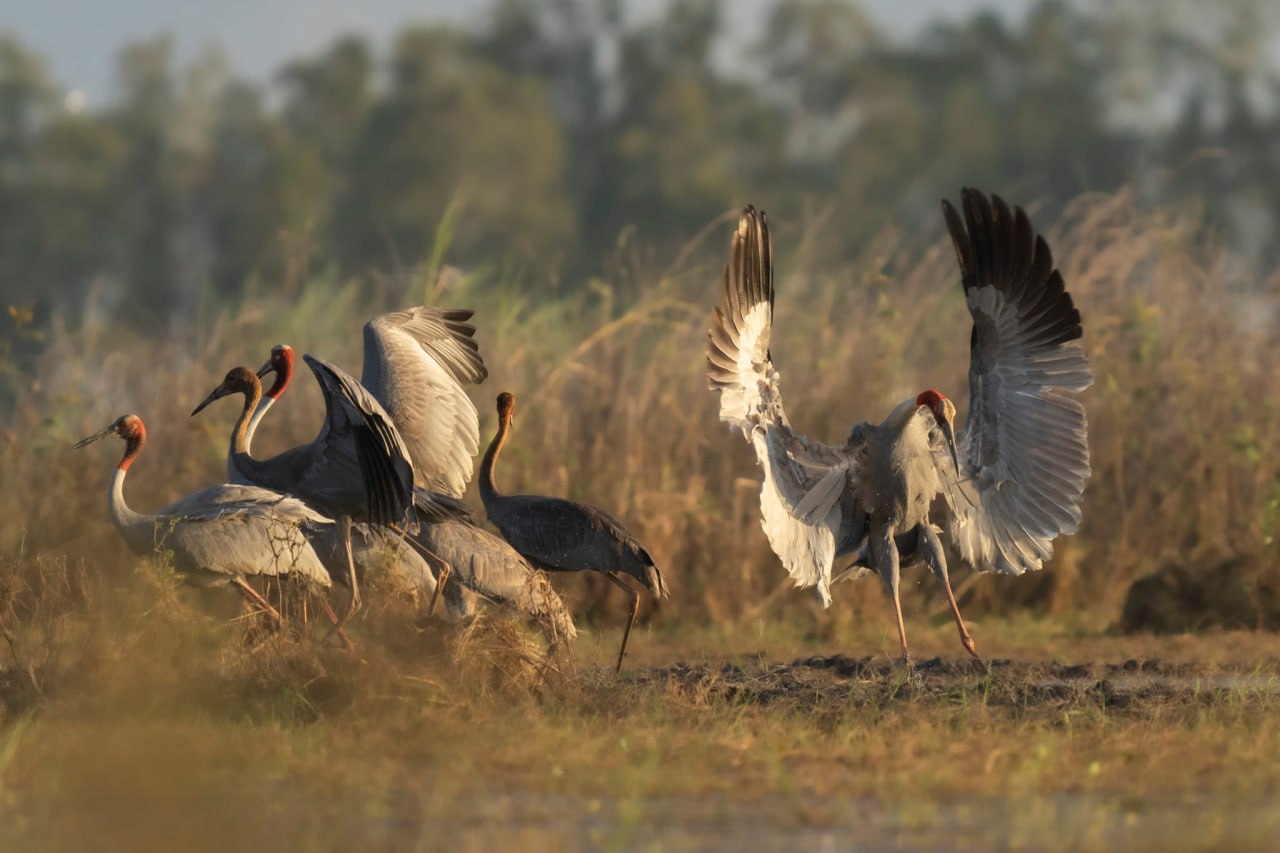 A group of rare Sarus cranes in the Boeung Prek Lapouv Protected Landscape (BPL) in Takeo Province. Photo: Suong Mardy
A group of rare Sarus cranes in the Boeung Prek Lapouv Protected Landscape (BPL) in Takeo Province. Photo: Suong Mardy
Mardy also presents his other works on social media and other online platforms, while he describes his journey through vlogs on his YouTube channel which features how the group works and mishaps they face while travelling.
Sacrifices are made along the way
The group gets no financial support, so members use their own equipment and their own money for travel and services.
“We have our own stuff and voluntarily do it. We are not doing it for sponsors,” he said.
Regardless, the group has faced a few challenges. One is the unforeseen incidents while walking in the forests. Mardy said nature could not always be convenient for them, and small paths, weather, and insects were obstacles. Accidents have been physical.
Another challenge is the lack of quality time with their families, because they use most of their available time for traveling and photography.
The long wait for wildlife to appear is another challenge. In protected areas, animals or birds do not show up easily or often, so the group usually spends two to three days photographing the target subjects.
“Of course, we learn from the researchers and the communities about specific locations to find the target subjects. However, there is no guarantee. So, we have to wait,” Mardy said.
Preparations for passionate amateurs
When it comes to wildlife photography in forests, two basic tools are essential: a wide-angle lens or a telephoto lens (or both) and a camera (or two for both lenses), Mardy advised.
“We can use one camera with one lens too but it depends on our decision whether to capture landscapes or wildlife. Having both sets is more flexible, so we usually have two,” he said.
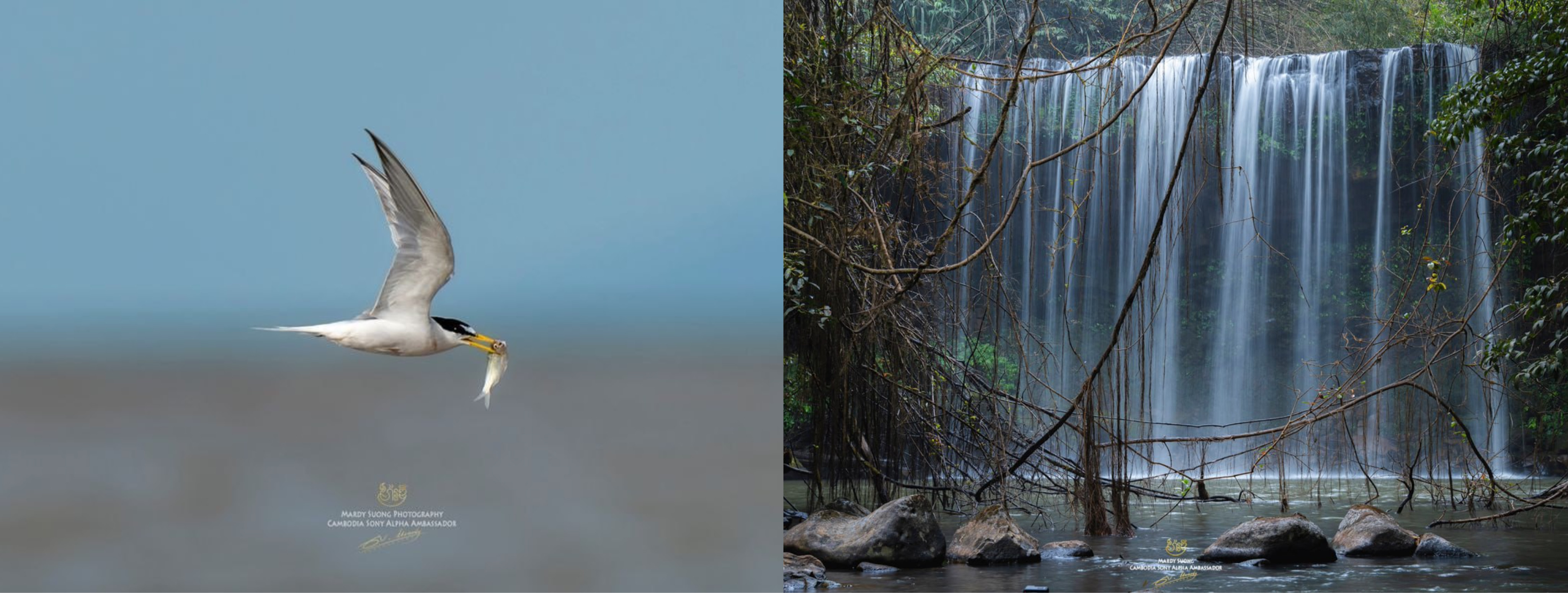
To encourage more wildlife photographers, Mardy calls on the people who are interested to join the group. They need only determination and equipment.
“Everyone can join us as long as they’re committed to promoting and conserving wildlife. They, however, have to use their own money for necessary expenditures,” he said.
Those who do not have two sets of cameras can choose between landscapes and wildlife because they are always welcome.
“They can always photograph landscapes or insects in the forests if their equipment is not enough for wildlife movement,” he added.
In another aspect, there are not many female photographers in the team and none in the wildlife photography category, unlike in street photography or professional photoshoots.
“There are indeed women photographers but no women are going to the forests for wildlife photography with us. It might be because of the social norms as there is a small number of women in this field,” he said.
Nevertheless, Mardy encourages women photographers to join in this category too because there are many of them in other countries.
He also asked local authorities and the public to support their work. “The public’s support is our motivation. We do not require much; we only need their recognition by sharing our works,” he said.







